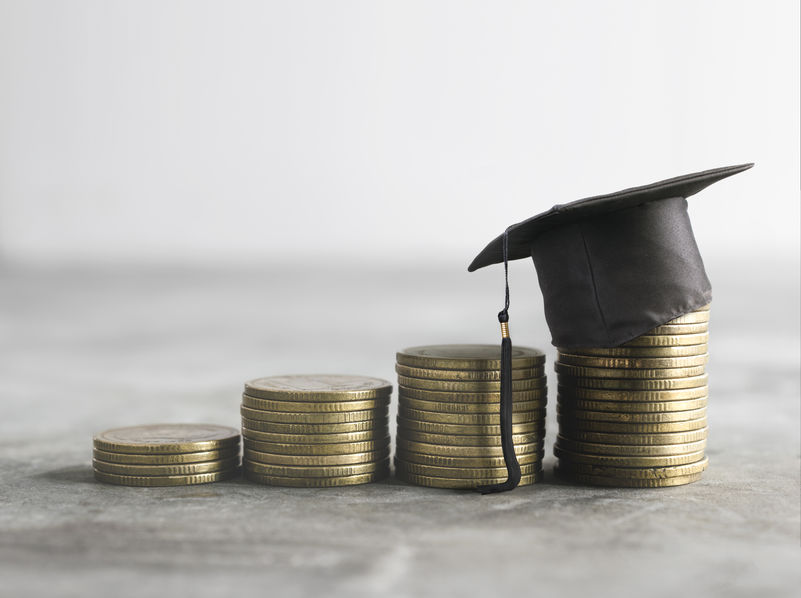 Several studies have shown that, on average, getting a college degree significantly improves your earning potential in the long run. Little wonder a lot of aspiring students turn to student loans to realize their college dreams. The total student loan debt in the United States currently stands at $1.57 trillion, with the average borrower owing $37,584.
Several studies have shown that, on average, getting a college degree significantly improves your earning potential in the long run. Little wonder a lot of aspiring students turn to student loans to realize their college dreams. The total student loan debt in the United States currently stands at $1.57 trillion, with the average borrower owing $37,584.
While the majority of borrowers end up paying back their debt, a few do not for several reasons. If you’re going through intense financial difficultly, you would have considered declaring bankruptcy. While Chapter 13 bankruptcy will discharge most of your unsecured debts, your student loan debt wouldn’t be automatically discharged. While this doesn’t mean your student loan cannot get discharged, doing so is very difficult. In this post, we explore all the subtleties involved.
How Difficult Is Student Loan Discharge?
According to a recent study by SavingForCollege.com, only 0.04% of people who filed for bankruptcy and sought to have their student loan discharged had either a partial or full discharge. That’s 4 out of every 10,000 people! As you can see, while it’s is not impossible, it is a tough proposition.
The reason for this difficulty is the stringent requirements needed to qualify for a discharge. You need to prove to the court that your student loan is causing “undue hardship” for you or your dependents. But proving undue hardship is tough.
While there are no strictly defined metrics for what constitutes undue hardship, bankruptcy courts make use of two major tests to determine it. They are the Brunner test and the Totality of the Circumstances Test. However, the Brunner test is more widely used.
Under the Brunner test, here are the three things you must prove to show undue hardship:
1) Your current income and expenses cannot afford you and any dependents a minimal standard of life if you’re forced to repay.
2) Your current circumstances would not enable you to earn enough money to make your monthly repayments.
3) You’ve previously tried in good faith to repay your loan or negotiate a lower rate.
You need to come with sufficient evidence to prove each of these factors. And because of the level of complexity involved, it is prudent to work with a bankruptcy attorney to guide you through the process.
Situations that May Qualify for Student Loan Discharge
Here are some instances where you’re more likely to get your student loan debt discharged.
- Disability
Sometimes, terrible things happen to people that prevent them from working. This could be a disability caused by an accident or a serious medical issue. If you cannot work due to a disability or a disability has significantly lowered your earning potential, paying off your student loan might be impossible. This is even worsened by the fact that disability comes with higher medical bills. You might have your student debt discharged in such a scenario.
- Closed School
If you’re unable to complete your program or get a degree because your institution closed down, you might be able to discharge your federal student loan.
- Fraud
If you’ve incurred your student debt because of fraud or misrepresentation by your college, you might be able to get it discharged. Examples of fraudulent activities include your college wrongly certifying your eligibility for a student loan or signing your loan application without your permission.
How to Discharge Student Student Loan Debt
Before you begin the process, you need to speak with a bankruptcy attorney to see if you have a solid case to prove undue hardship. Only then should you begin the process. But note that this process is not as simple as filing for bankruptcy. You’ll need additional work on top of the standard bankruptcy proceeding. In particular, it’s an adversary proceeding within a bankruptcy proceeding, meaning a separate lawsuit is filed within the bankruptcy case. And guess worth? The lender gets to defend against the discharge. Also, note that you’ll need to pay a higher attorney fee because of the greater complexity involved.
After presenting your case, the bankruptcy case will use the Brunner or the Totality of the Circumstances test to determine undue hardship. At the end of the process, one of three things will happen:
1) Your debt is fully discharged because of undue hardship.
2) Part of your debt is discharged. You’ll then need to pay the balance under a new payment plan.
3) None of your debt is discharged. This means you would still be required to pay your debt in full.
Future Prospects
As it stands, discharging your student debt loan is a very difficult endeavor. However, that might change very soon. In December 2020, Senator Elizabeth Warren put forward the Consumer Bankruptcy Reform Act of 2020, which will, in part, make student loan dischargeable in the standard bankruptcy proceeding. Only time will tell if this bill will become law. But with Joe Biden as the president and a Democratic majority in the Senate and House, the prospects are looking good.
Contact us here today for more information.

